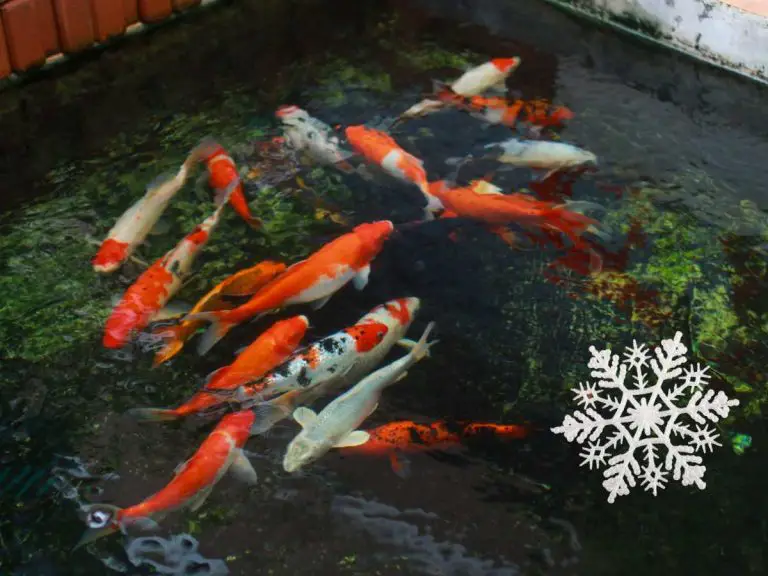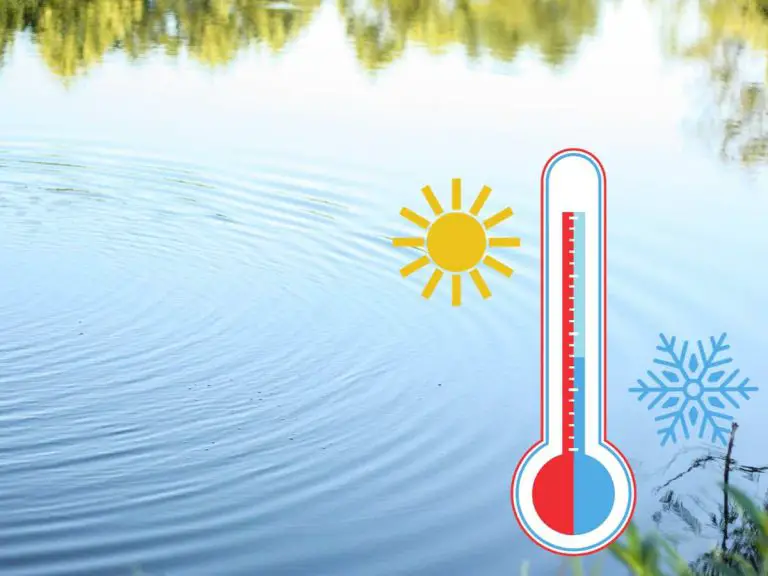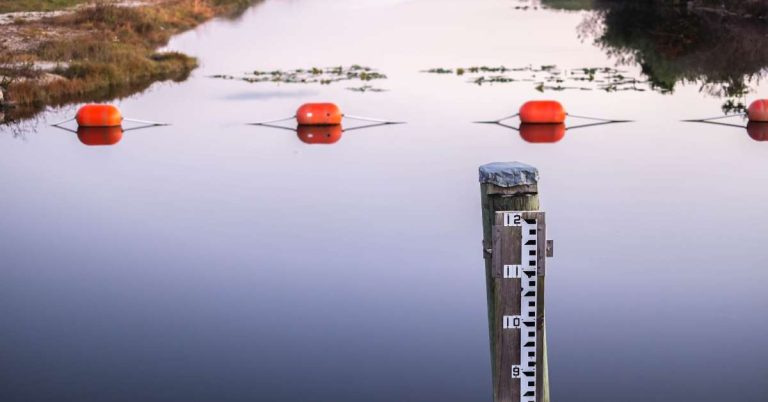Determining the Ideal Koi Population for Your Pond: Expert Guidance and Advice
Before planning or building a Koi, it’s natural to wonder: “How many koi can I have in my pond?”
This is an important consideration to ensure the well-being and balance of your pond ecosystem. The ideal number of koi for your pond depends on several factors such as pond size, filtration system capacity, and the overall health of the fish.
When determining the koi population in your pond, you need to consider the size of your pond first. A larger pond can accommodate more koi, while a smaller pond may have limitations. As a general rule, aim for 1 extra Koi for every 200-300 gallons of water.
| Pond Size | Pond Volume (gallons) | Recommended Koi |
|---|---|---|
| Very Small | < 100 | 1 koi |
| Small | 100 – 299 | 1-2 koi |
| Small-Medium | 300 – 499 | 2-3 koi |
| Medium | 500 – 999 | 4-7 koi |
| Medium-Large | 1,000 – 1,499 | 8-12 koi |
| Large | 1,500 – 1,999 | 13-18 koi |
| Extra Large | ≥ 2,000 | 19+ koi |
The next factor to consider is the capacity of your filtration system. A properly sized filtration system is crucial for maintaining water quality and supporting a healthy fish population.
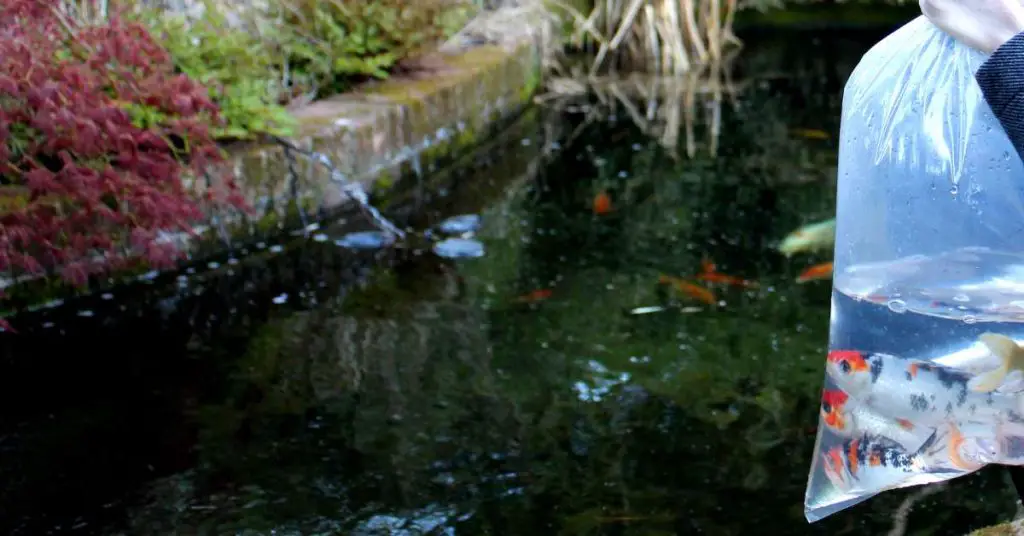
Factors to consider when determining koi population in pond
| Factor | Consideration |
|---|---|
| Pond Size | Larger ponds can accommodate more koi. Smaller ponds have limitations and may require fewer koi to prevent overcrowding. |
| Filtration System Capacity | A properly sized filtration system is crucial for maintaining water quality. Inadequate filtration can lead to poor water conditions if the system cannot handle koi waste. |
| Koi Well-being | Overcrowding can cause stress, aggression, poor growth, and susceptibility to diseases among koi. Maintaining a balanced population promotes koi health and happiness. |
When it comes to determining the number of koi you can have in your pond, there are several important factors to consider. These factors will not only ensure the well-being of your koi but also help maintain a healthy and balanced ecosystem in your pond.
Pond size
One of the first things you’ll need to take into account is the size of your pond. The size of your pond will determine how much swimming space your koi will have and how much room they need to grow and thrive. If your pond is on the smaller side, you may need to limit the number of koi you have to prevent overcrowding and keep the water quality optimal.
Filtration system capacity
Another important factor to consider is the capacity of your filtration system. A good filtration system is essential for maintaining clean and healthy water in your pond. It helps remove excess waste and toxins that can accumulate from the koi’s excretions. If your filtration system is not equipped to handle a large population of koi, it may struggle to keep up with the increased waste production, leading to poor water quality and potentially harming your koi.
Koi well-being
Lastly, it’s crucial to consider the well-being of your koi when determining their population in your pond. Overcrowding can cause stress among koi, leading to aggression, poor growth, and increased susceptibility to diseases. By ensuring that your pond is not overcrowded, you can promote the overall health and happiness of your koi.
Ideal number of koi for my pond
When it comes to determining the ideal number of koi for your pond, there are a few factors to consider. Firstly, it’s important to follow general guidelines for koi stocking density to ensure the health and well-being of your fish. These guidelines take into account the size of your pond and the capacity of your filtration system. Secondly, different pond sizes require different considerations, as larger ponds can accommodate more koi than smaller ones.
Stocking density refers to the number of fish per unit of water surface area. A common guideline is to have no more than one inch of fish per ten gallons of water in your pond. This means that if you have a 1,000-gallon pond, you should aim for a maximum of 100 inches of fish. Keep in mind that this guideline should not be exceeded, as overstocking can lead to poor water quality and stress for your koi.
Considerations for different pond sizes:
1. Small ponds (under 500 gallons): If you have a smaller pond, it’s best to keep the number of koi to a minimum. These ponds have limited space and may not have the capacity to sustain a large population of fish. It’s important to strike a balance between the number of fish and the available space in your pond.
2. Medium-sized ponds (500 to 2,000 gallons): With a medium-sized pond, you have a bit more flexibility in terms of koi population. However, it’s still essential to avoid overcrowding and maintain a healthy environment for your fish. Following the general stocking density guideline mentioned earlier should help you determine the ideal number of koi for your pond.
3. Large ponds (over 2,000 gallons): If you’re fortunate enough to have a large pond, you have more room to house a larger population of koi. These ponds can support higher stocking densities, but it’s crucial to avoid excessive overstocking. Keeping an eye on water quality and ensuring your filtration system can handle the load is key to maintaining a healthy balance in your pond.
Determining the ideal number of koi for your pond requires careful consideration of factors such as pond size, filtration system capacity, and the well-being of your koi. By following general guidelines for stocking density and considering the specific needs of your pond size, you can create an optimal environment for your koi to thrive.
How to calculate koi stocking rate in pond
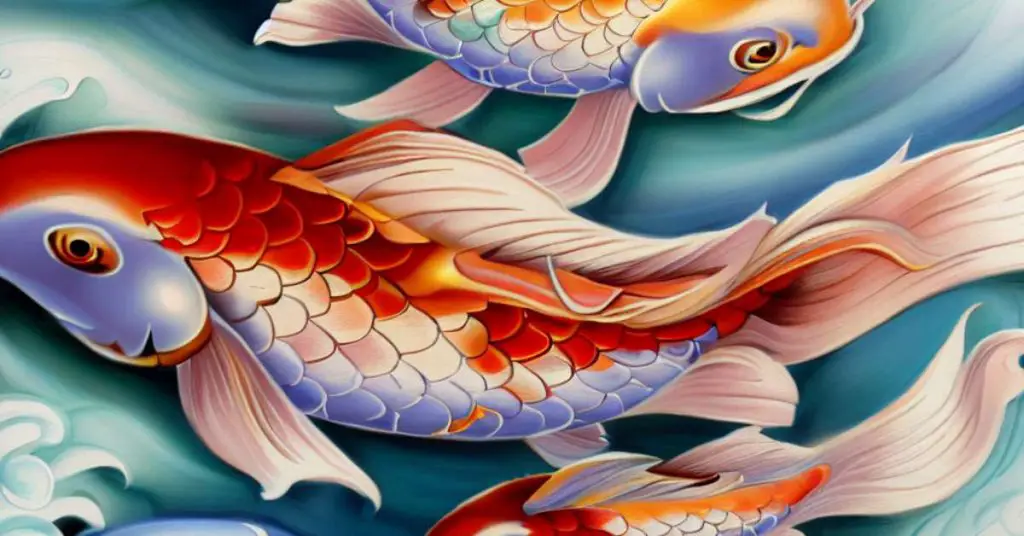
A. Formula for estimating koi population
Believe it or not, there’s actually a formula you can use to estimate the stocking rate of koi in your pond. It’s pretty simple, so don’t worry if you’re not a math whiz.
Here’s the formula:
Koi population = Pond volume (in gallons) / Koi stocking rate (in gallons per koi)
Let me break it down for you. The pond volume refers to the total amount of water your pond can hold, usually measured in gallons. The koi stocking rate, on the other hand, refers to the recommended amount of water per koi. In other words, it’s the space that each koi needs to thrive and stay healthy.
B. Example calculations for different pond sizes
Let’s say you have a pond with a volume of 1000 gallons and a recommended stocking rate of 100 gallons per koi. To calculate the koi population, you would divide the pond volume by the koi stocking rate:
Koi population = 1000 gallons / 100 gallons per koi = 10 koi
So, in this case, you could safely have 10 koi in your pond without overcrowding it.
Now, let’s take another example. Let’s say you have a larger pond with a volume of 5000 gallons and a recommended stocking rate of 200 gallons per koi. Using the formula, you would divide the pond volume by the koi stocking rate:
Koi population = 5000 gallons / 200 gallons per koi = 25 koi
Therefore, you could comfortably keep up to 25 koi in this larger pond.
Importance of maintaining a healthy and balanced ecosystem
When it comes to your koi pond, maintaining a healthy and balanced ecosystem is vital for the well-being of your fish. Overstocking your pond can have a significant impact on water quality, which can ultimately lead to negative consequences for your koi.
One of the key effects of overstocking is the decline in water quality. As the number of koi increases, so does the amount of waste they produce. This waste contains harmful substances such as ammonia and nitrites, which can accumulate in the pond water and create a toxic environment for your fish. Poor water quality can lead to stress, disease, and even death among your koi population.
In addition to water quality issues, overstocking can also have a negative impact on the health and growth of your koi. When there are too many fish in a limited space, competition for resources such as food and oxygen increases. This can result in stunted growth, as the koi may not receive sufficient nutrition or oxygen to support their development. Furthermore, overcrowding can cause increased aggression and territorial disputes among the fish, leading to injuries or even fatalities.
To ensure the well-being of your koi and maintain a healthy and balanced ecosystem, it is crucial to carefully consider the stocking density of your pond. This involves finding the right balance between the number of koi and the capacity of your pond to support them. By keeping the fish population at an appropriate level, you can help minimize water quality issues, reduce stress among your koi, and promote healthier growth and development.
Koi stocking density for pond
When it comes to koi population in your pond, you need to consider the stocking density – how many koi you have per square foot of pond surface area. Maintaining the right stocking density is crucial for creating a healthy and vibrant ecosystem in your pond. Let’s take a look at different stocking densities for various pond sizes and guidelines to maintain optimal pond conditions.
Different stocking densities for various pond sizes
The stocking density for your pond will vary depending on its size. Generally, a good starting point is to have 1 koi per 10 square feet of pond surface area. This provides enough space for each koi to thrive and ensures proper oxygen levels in the water.
| Pond Size | Recommended Stocking Density |
|---|---|
| Small (under 500 gallons) | 1 koi per 15 square feet |
| Medium (500 to 2,000 gallons) | 1 koi per 10-12 square feet |
| Large (over 2,000 gallons) | 1 koi per 8-10 square feet |
If your pond is small, such as less than 500 square feet, it’s best to stick with a lower stocking density, such as 1 koi per 15 square feet. This allows for more swimming space and reduces the risk of overcrowding.
For medium-sized ponds, between 500 and 1,000 square feet, you can increase the stocking density slightly to 1 koi per 10-12 square feet. The additional space allows for a larger koi population without compromising their well-being.
Large ponds, over 1,000 square feet, can accommodate a higher stocking density of 1 koi per 8-10 square feet. With more space available, the koi have room to explore and interact with each other, creating a visually stunning display.
Guidelines for maintaining optimal pond conditions
While these stocking densities serve as a general guideline, it’s important to keep in mind other factors that impact the overall well-being of your koi and the pond ecosystem. Regular water testing is crucial to monitor the water quality and make necessary adjustments to maintain optimal conditions.
Proper filtration is essential for a healthy pond. Make sure your filtration system is capable of handling the waste produced by your koi population. The filters should effectively remove debris and maintain good water quality. Regular cleaning and maintenance of the filters are necessary to ensure they continue operating at their best.
In addition to filtration, consider the availability of sufficient oxygen in the pond. Aeration systems, such as air pumps or waterfalls, help to oxygenate the water and create a more balanced ecosystem. Adequate oxygen levels support the well-being of your koi and prevent oxygen-related issues.
Remember, it’s always better to start with a lower stocking density and gradually increase if you feel confident in maintaining the pond’s ecosystem. Overstocking can lead to poor water quality, stress, and health issues for your koi. By following these guidelines and regularly monitoring your pond’s conditions, you can create a vibrant and thriving environment for your koi.
Maximum koi capacity for your pond
When it comes to determining the maximum number of koi that your pond can accommodate, there are several factors that come into play. By considering these factors, you can ensure that you maintain a healthy and balanced ecosystem for your aquatic friends.
| Pond Size | Maximum Koi Capacity |
|---|---|
| General guideline (1 koi per 250 gallons) | Pond volume / 250 |
| Initial stocking (70-80% of maximum) | 0.7 x Maximum Koi Capacity |
A. Determining the maximum number of koi based on pond specifications
First and foremost, you need to take into account the size of your pond. A larger pond will typically have a greater capacity to support a larger number of koi. As a general guideline, experts recommend an average of one koi fish per every 250 gallons of water.
However, it’s important to note that this is just a general rule of thumb. Other factors such as the filtration system capacity and the overall well-being of the koi should also be considered.
B. Considerations for future growth and expansion
While it may be tempting to fill up your pond to its maximum capacity right from the start, it’s essential to leave room for future growth and expansion. Koi fish can grow quite large, and their population may increase over time if they are breeding successfully.
To account for this, you should aim to initially stock your pond at around 70-80% of its maximum capacity. This will allow the koi to grow and thrive without becoming overcrowded. It’s always easier to add more fish later on if needed, rather than having to remove them due to overstocking.
By carefully considering the maximum koi capacity for your pond, you can provide a comfortable and sustainable environment for your fish. Remember, keeping a balance between the number of koi and the pond’s resources is crucial for the overall well-being and health of your aquatic companions.
Conclusion
In order to determine the appropriate number of koi for your pond, there are several factors that need to be considered. These factors include the size of your pond, the capacity of your filtration system, and the well-being of your koi. By taking these factors into account, you can ensure a healthy and balanced ecosystem for your koi.
When it comes to stocking density, there are general guidelines that can be followed, but it is important to also consider the specific size of your pond. Different pond sizes will have different ideal numbers of koi. By calculating the koi stocking rate using the provided formula and example calculations, you can determine the optimal number of koi for your pond.
Maintaining a healthy and balanced ecosystem is crucial for the well-being of your koi. Overstocking can lead to poor water quality and can negatively impact the health and growth of your koi. By following the recommended stocking densities and guidelines for optimal pond conditions, you can create a thriving environment for your koi.
It is important to determine the maximum capacity of your pond based on its specifications. This will allow for future growth and expansion while still maintaining a healthy and balanced ecosystem. By considering these factors, you can ensure that your pond provides the ideal habitat for your koi to thrive.
In summary, determining the appropriate number of koi for your pond involves considering factors such as pond size, filtration system capacity, and koi well-being. By following the guidelines for stocking density and maintaining optimal pond conditions, you can create a healthy and balanced ecosystem for your koi to thrive. Remember, the key is to provide a habitat that allows your koi to grow and flourish while ensuring water quality and their overall well-being.
Related Questions
What should I consider when choosing koi for my pond?
When choosing koi for your pond, consider factors such as the size and temperament of the fish, their compatibility with other koi, and their overall health. It’s important to select koi that are appropriate for your pond size and can thrive in your specific climate.
How often should I feed my koi in my pond?
Koi should be fed daily, but the frequency and amount will depend on factors such as the water temperature and the size of the fish. As a general guideline, feed your koi two to three times a day during warmer months, and reduce feeding during colder periods. It’s important not to overfeed them to prevent water quality issues.



